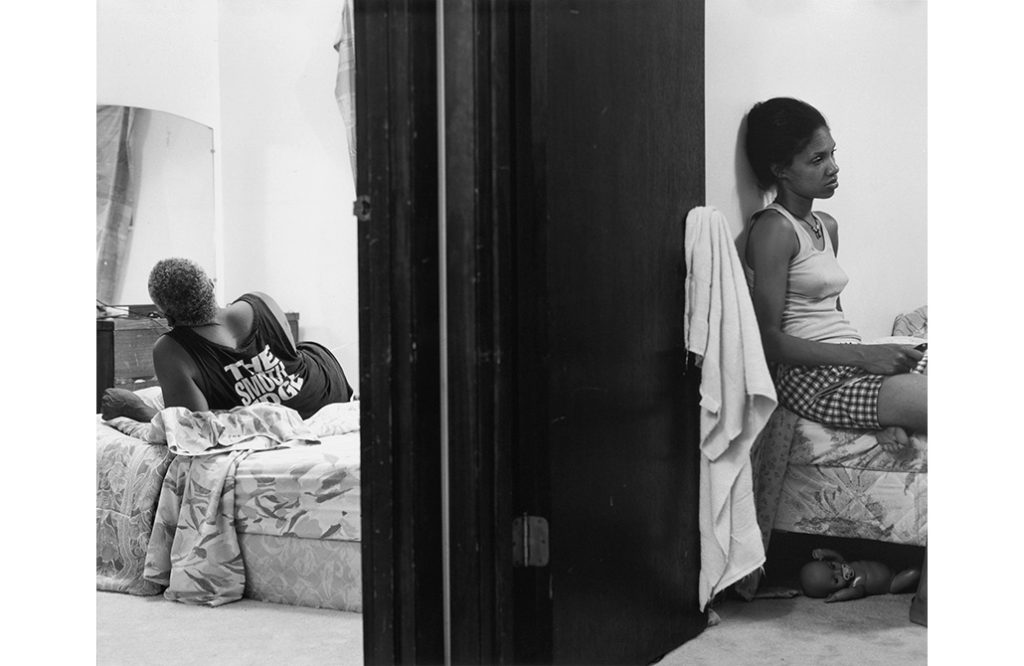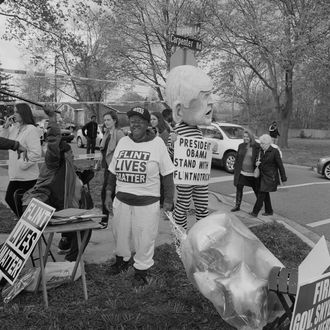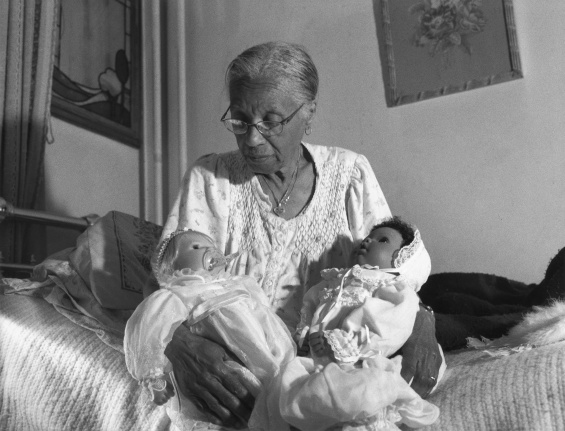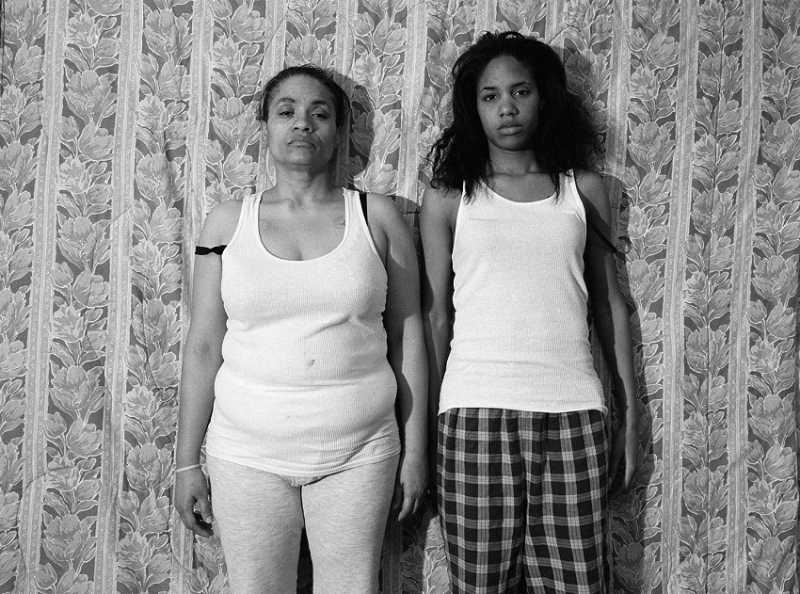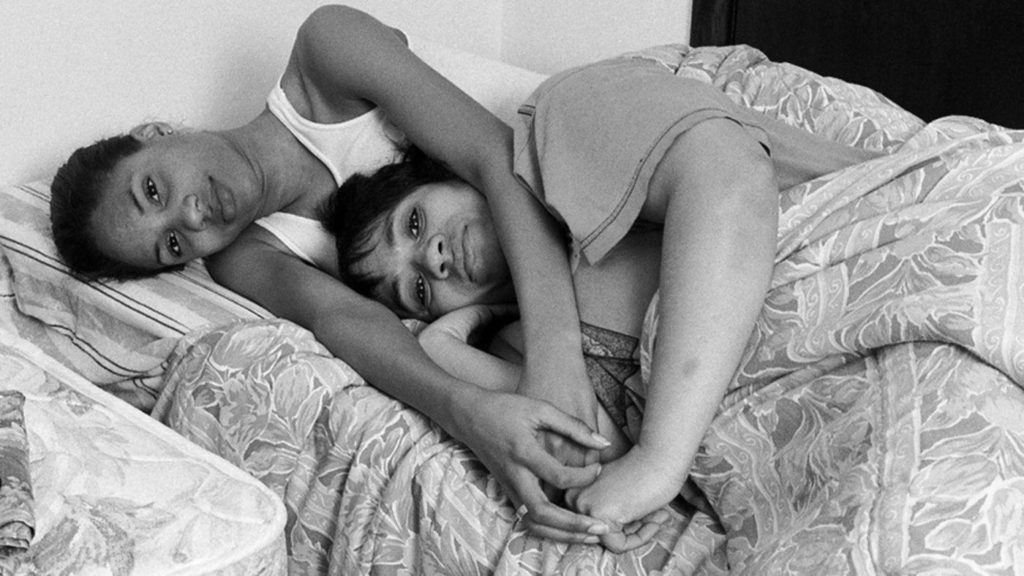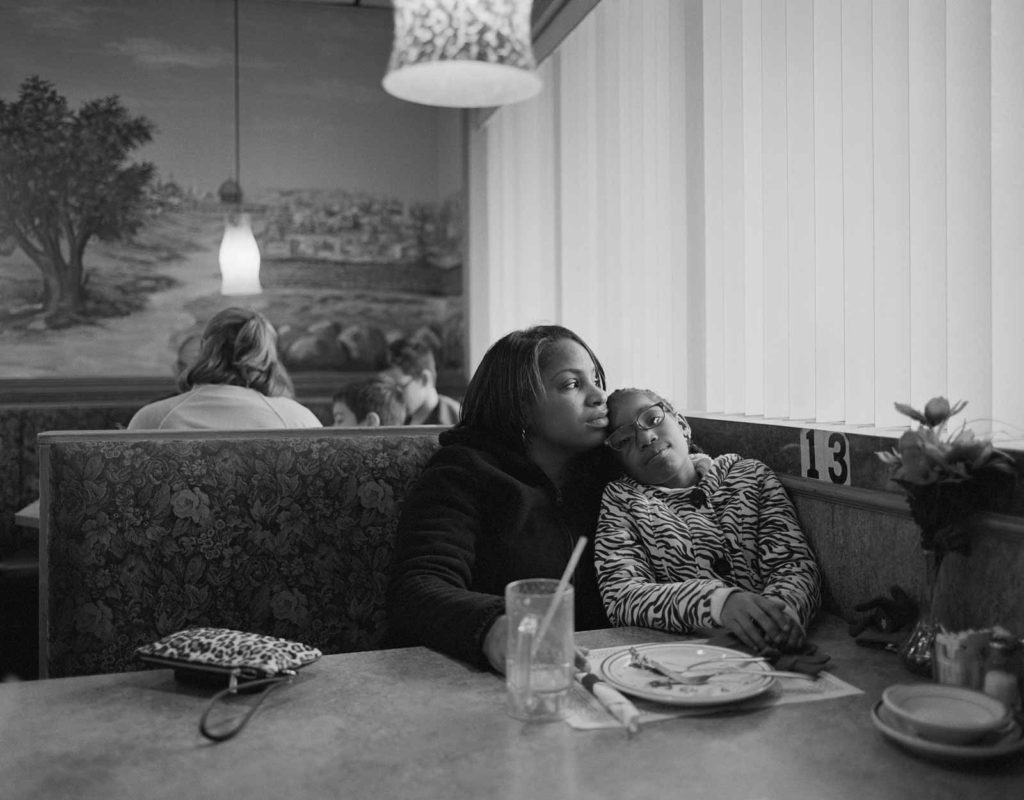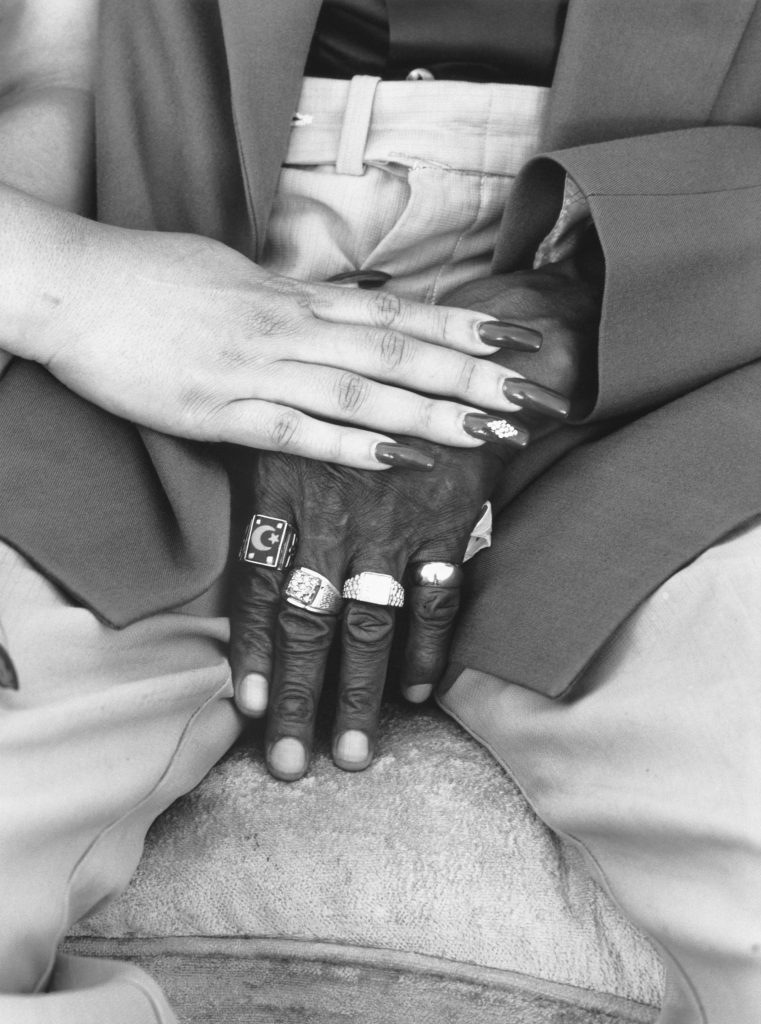Quotes
“My inability to articulate in words the harmful and painful effects the environment placed on my family made me turn to visual art as an outlet”
“At times the text functions as an image and the photograph becomes the visual language that creates a tension.”
“I look for a narrative or context that will amplify the voices of the marginalized”
I agree with what Frazier is stating here, as I believe that photography can be used as a powerful tool for truth that is more difficult to communicate through words. I also agree that photography provides a platform for the minorities of the world and it is essential it is used in this manner.
Analysis

This black and white portrait photograph taken by LaToya Ruby Frazier showcases Frazier and her mother, with her mother in the foreground of the image peering down and concealing half of Frazier’s face, who is placed behind her and staring into the lens. Here the two women are framed centrally, with empty space on either side of them, allowing the dissection of Frazier’s face to occur in the centre. It can be said that leading lines in this image are created by the outline of the mother’s side profile, as it leads the viewers eye from the bottom left corner up and around the photograph towards the focal point, which I believe to be Frazier’s stern gaze, connecting with her features. The same can be said for the lines created by the folds in the curtains, which draw the viewers attentions down from the top of the image to Frazier in the centre. Contrast in this piece is created by the opposing tones of the mother and daughter’s matching hairnets with Frazier’s bright, white tank top.
From a technical viewpoint it can be said that Frazier took this image with artificial, soft lighting as if it were taken with the room lighting there would be shadows on the face similar to butterfly lighting, which there are not. Also the curtains are drawn behind them which minimises the possibility of Frazier using natural light. The aperture setting used here appears to be a mid to large as the domestic background behind the two subjects is slightly out of focus, allowing for more attention to be placed on Frazier and her mother. Furthermore, Frazier most likely used a mid to high ISO setting as it appears that the room is dark, with the exception of the artificial lighting placed in front of them, assuring the photograph would not be under exposed. It seems that the shutter speed setting used was a medium one, meaning there would be no blur due to movement but still allowing light to enter the lens for long enough to not create an under exposed image.
This image is a part of Frazier’s 2014 book ‘The Notions of Family’ which was an attempt to explore the legacy of racism and economic decline in America’s small towns. Here Frazier is trying to emulate the traditional black and white style of documentary photography, recording domestic subjects and settings. From the facial expressions conveyed in this piece it can be said that there seems to be some tension between the mother and daughter. This may be a comment on the effects the economic environment of Frazier’s home town (Braddock) has on her family. As well as this, these effects may result in strains of relationships, such as mother and daughter, as conversations on the topic of money are known for causing divisions, especially in a domestic setting. However, the matching hairnets the subjects in this image are wearing, may be a symbol of unity in Frazier’s family that still stands despite these strains. In addition, the position of Frazier and her mother can be argued to be a comment on generational reaction to injustice, with Frazier symbolising the rising voice of the youth who question and protest the governments fail to amend the crisis of poverty, in contrast with the older generations who may not see a reason to question the system in which they have lived their whole lives in.

